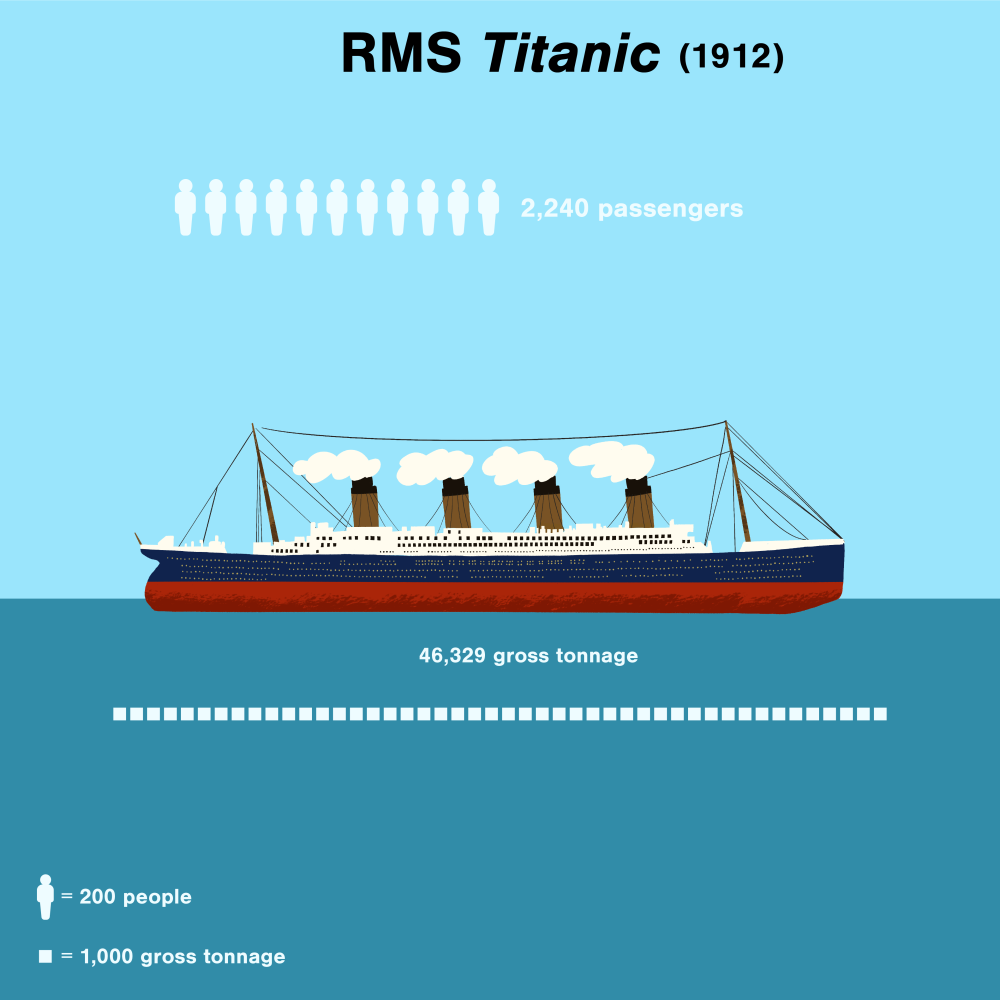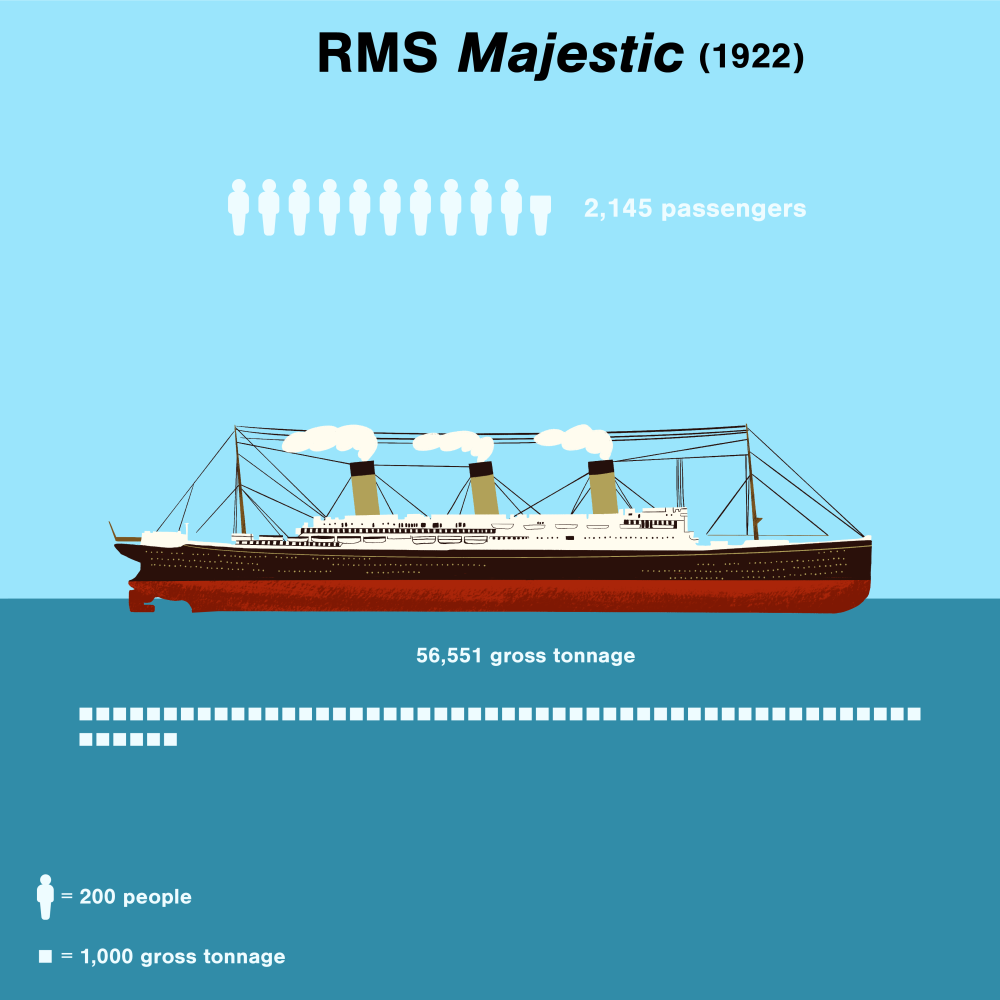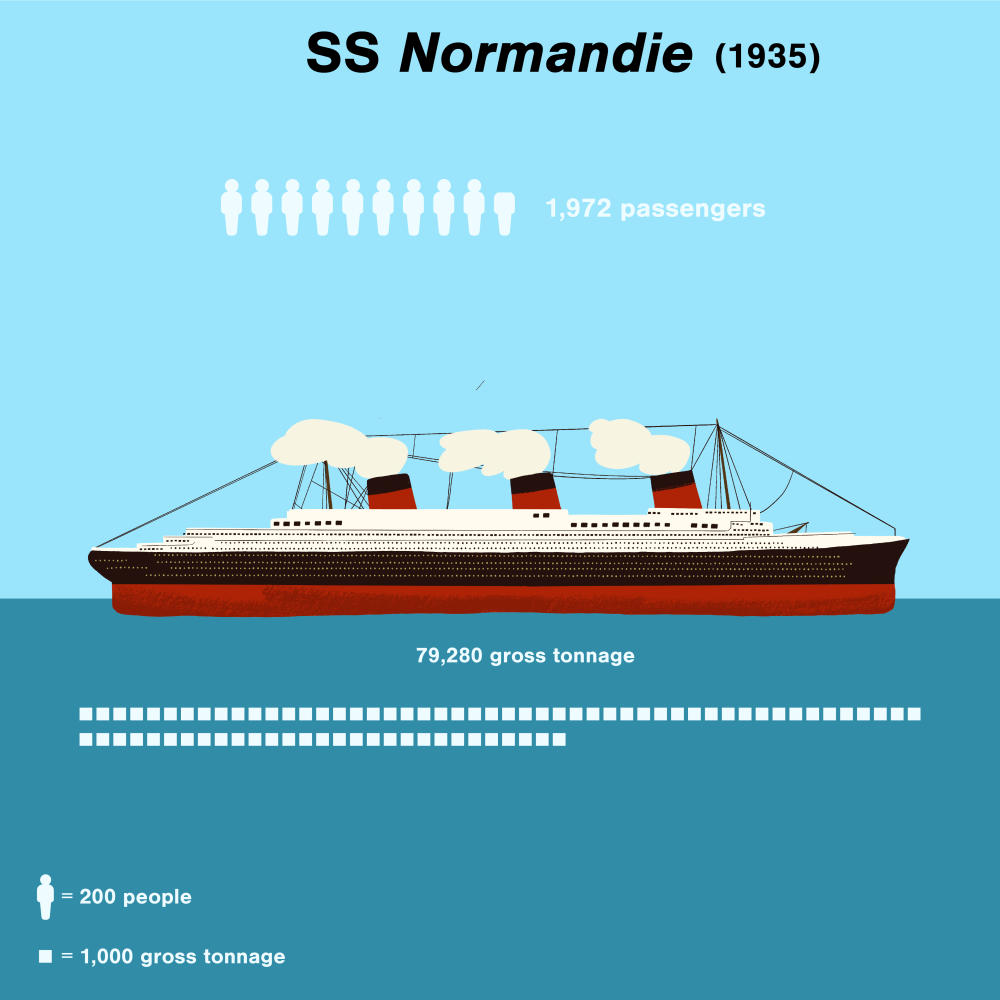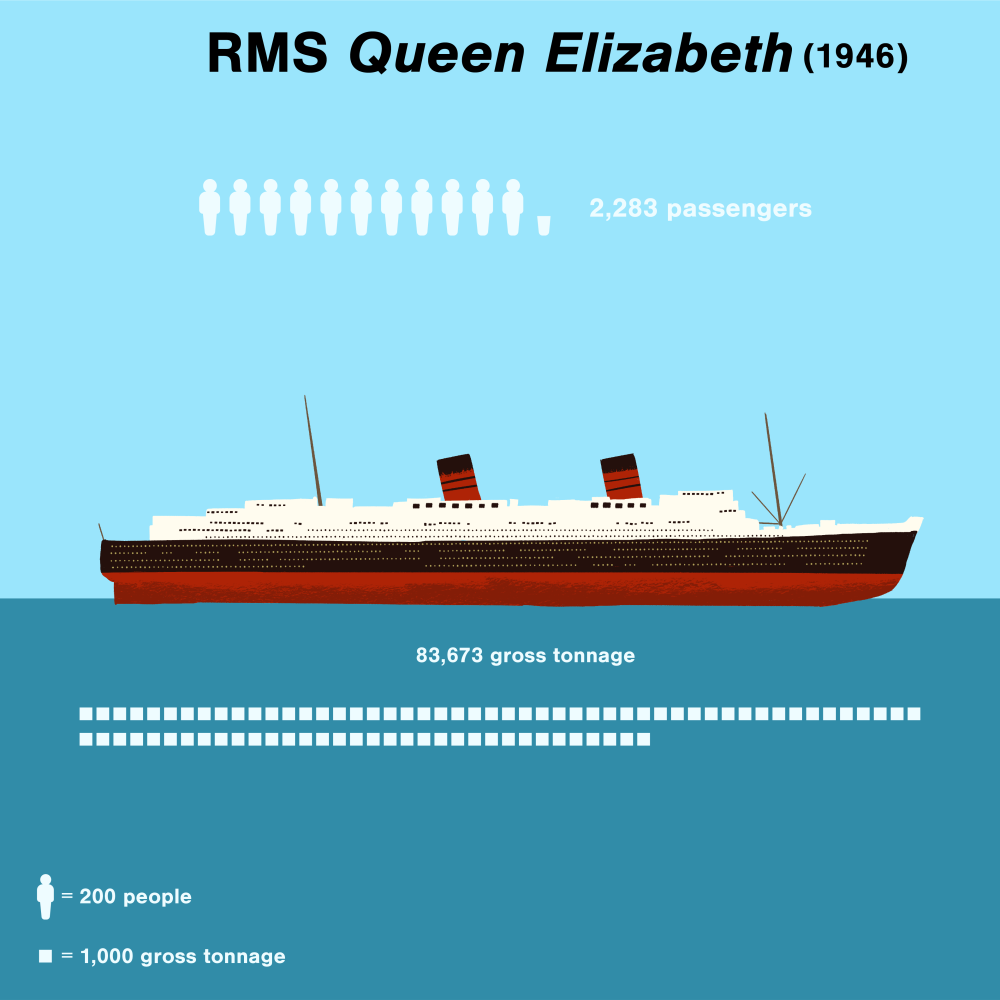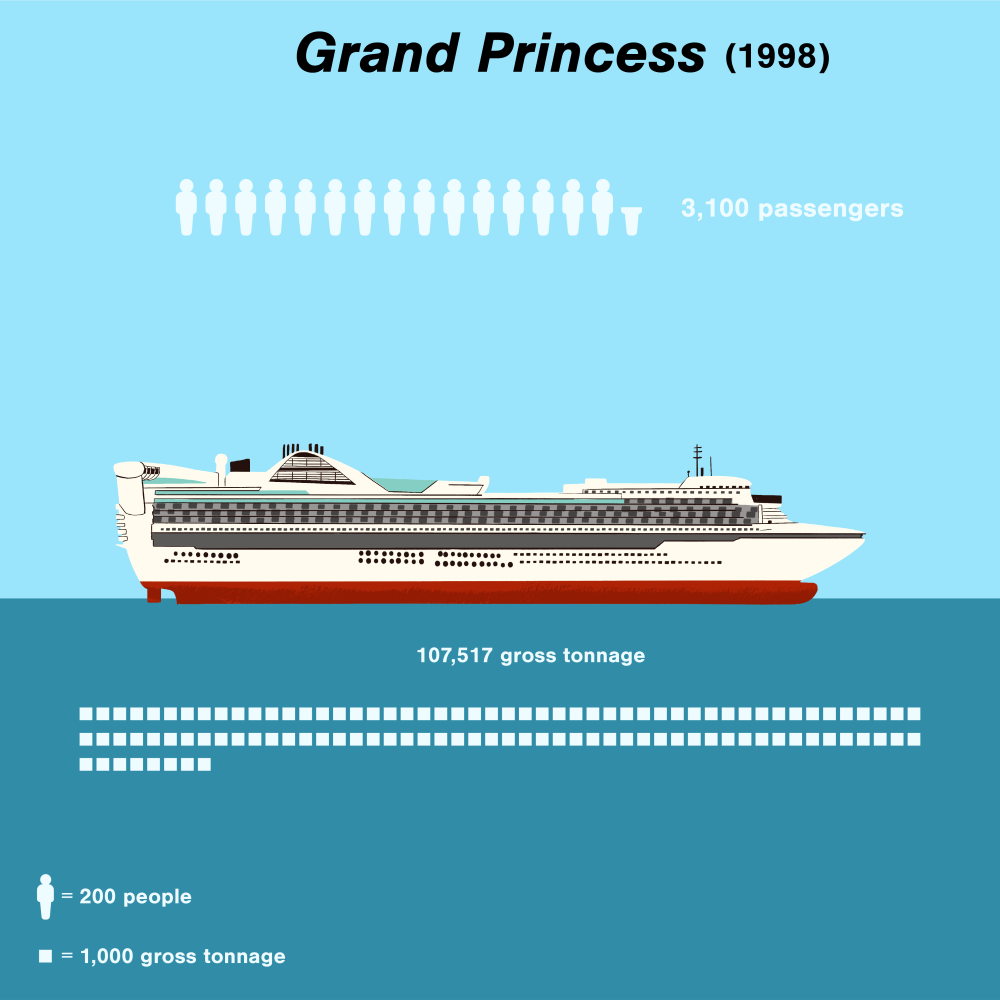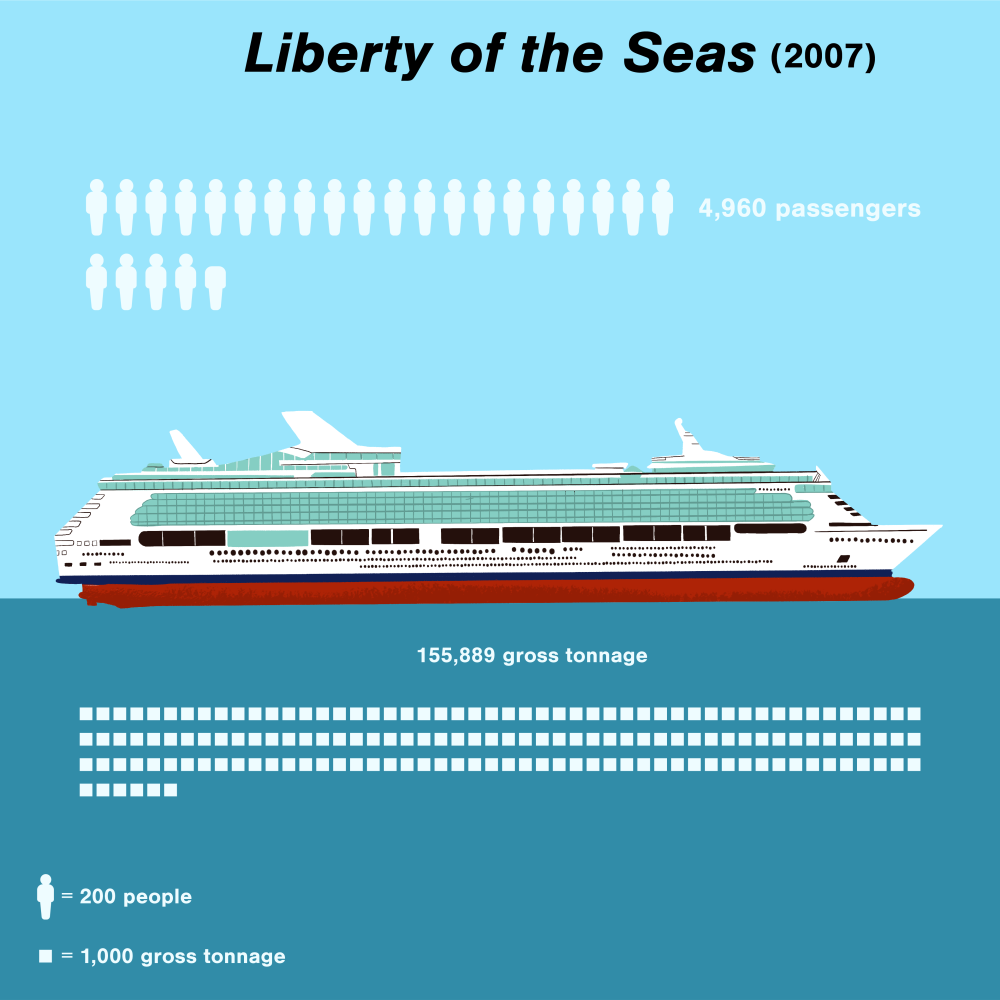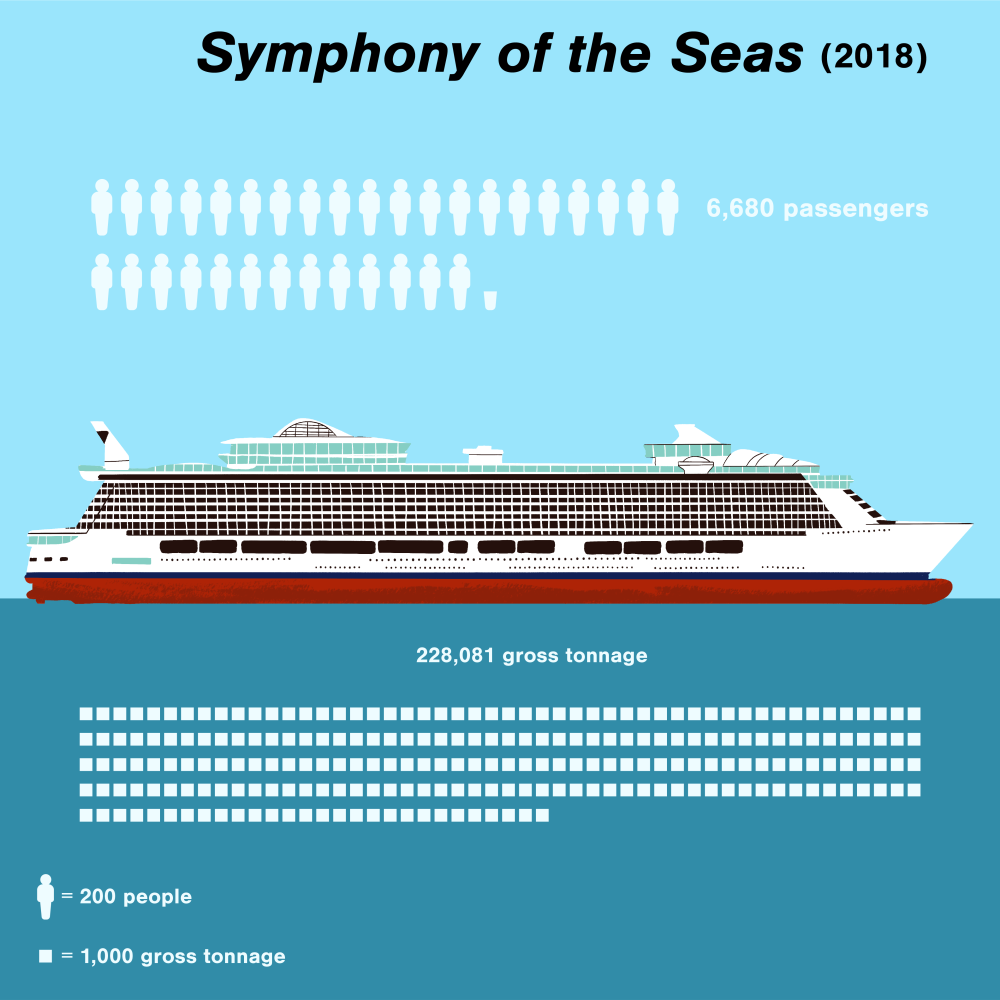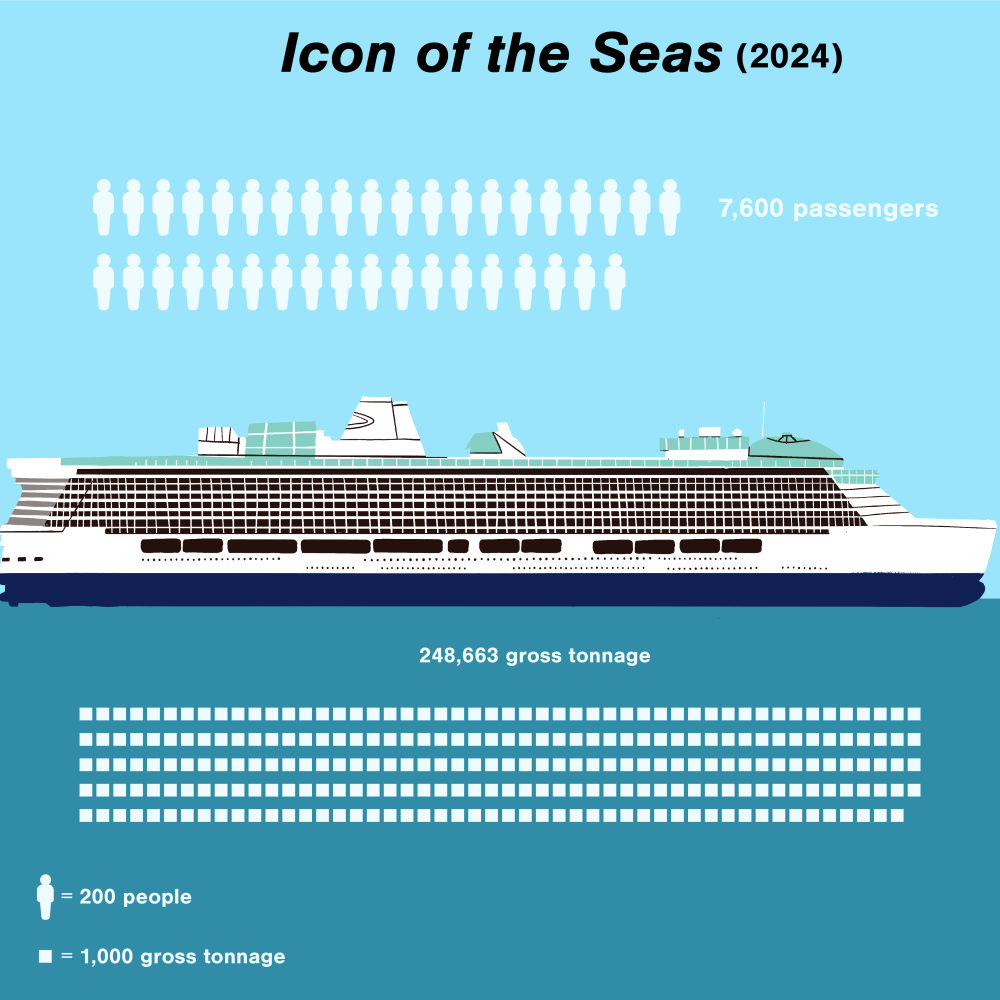In Graphic Detail: Colossal Cruise Ships
They just keep getting bigger and bigger.
Article body copy
Last week, Royal Caribbean International launched the largest cruise ship in the world, the Icon of the Seas. This leviathan, which departed from Miami on a seven-day tour, can carry up to 7,600 passengers and 2,350 crew members. At 250,000 gross tonnage, the colossal ship is about five times larger than the ill-fated RMS Titanic, and at 364 meters, the ship is longer than the world’s largest aircraft carrier, the USS Gerald R. Ford. The Icon of the Seas contains an extravagant array of amenities:
- the world’s largest shipboard water park
- an ice rink
- seven swimming pools
- 17 bars
- 20 restaurants
The Icon of the Seas is just the latest in a series of increasingly gargantuan ships that have burgeoned over the past several decades. Initially, large 20th-century ocean liners, such as the RMS Majestic and SS Normandie, plied the route between Europe and North America and certainly exuded luxury, but they were primarily modes of transportation. The RMS Queen Elizabeth, which took its maiden voyage in 1946, remained the largest passenger ship for over 50 years.
At the turn of the 21st century, cruise ships became destinations themselves. The Grand Princess, a megaship with over 100,000 gross tonnage, launched in 1998 and redefined cruising; it can host more than 3,000 passengers and has enough on-board entertainment that passengers hardly need to disembark. Since then, megaships have taken millions of passengers through Caribbean, Alaskan, and Mediterranean waters. The growth in cruise ship size and capacity shows no sign of ebbing, with the industry raking in nearly US $19-billion in revenue in 2022.
Illustrations by Mercedes Minck
Royal Caribbean International claims that the Icon of the Seas, which runs on liquefied natural gas (LNG), heralds the beginning of the company’s transition to more sustainable cruise ships. But the International Maritime Organization estimates that typical LNG engines used by the cruise industry leak about 3.5 percent of on-board methane—which traps about 80 times more heat than carbon dioxide.
Cruise ships also have well-documented negative impacts beyond emissions. The ships dump millions of liters of treated sewage and wastewater on each voyage, and engine noise interferes with the ability of killer whales and other cetaceans to echolocate. Massive numbers of passengers disembarking in small communities often destroy local character, and side trips via helicopters and speedboats can be noisy nuisances for both humans and wildlife.
The Icon of the Seas may be gigantic, but so is its ecological footprint.


